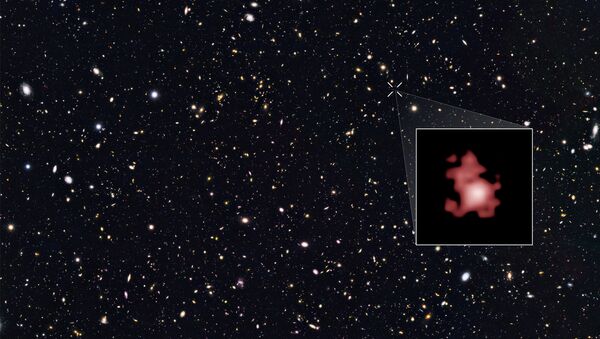In the Astrophysical Journal, astronomers at the University of California, Santa Cruz described how they observed a small, yet bright galaxy at the far end of the universe, which they have called GN-z11.
The team noticed the new object whilst analyzing images from the Hubble Space Telescope.
They calculated that the light emitted by the galaxy's stars had to travel for 13.4 billion years before being picked up by the telescope — which means it was already in existence when the universe was just 400 million years old.
Yet, the galaxy is even farther from Earth than 13.4 billion light-years: since the universe is in constant expansion, scientists expect it to have drifted up to 32 billion light-years away from our planet.
What the scientist saw, effectively, was a snapshot from the past, showing what GN-z11 looked like 13.4 billion years ago.
Back then, the galaxy only sported one billion stars — being about one percent of the Milky Way's size. Still, it churned out new stars at a breakneck pace, and they were on average big, hot and bright stars.
Until now, the common belief has been that in the early days of our universe, stars could have not been this bright. UC-Santa Cruz astronomers, therefore, are now determined to further investigate how common these bright galaxies were back then.
What is clear is that GN-z11's record will not go unchallenged for long.
While the Hubble Space Telescope can only see as far as its technology allows, more sophisticated scientific equipment is emerging and could help smash the record rather quickly.
In just a couple of years, for instance, the James Webb Space Telescope will be inaugurated. The result of a NASA-ESA-CSA joint venture, will see the new telescope launched in October 2018 — its peering abilities far exceeding Hubble's.




